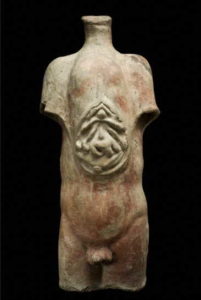
- This event has passed.
Anatomy as Religion: The Body in Ancient Italian Votive Practice
Sunday, March 21, 2021 @ 2:00 pm - 3:00 pm EDT
Professor Rebecca Flemming, Jesus College, Cambridge University.

Tens of thousands of votive objects, mostly in terracotta, survive from religious sanctuaries across Republican central Italy (from the fourth to the first centuries BC). Many are in the shape of body parts, external and internal, single and multiple, even displayed within a whole human torso or figure, and they are usually interpreted as representing engagements with the divine about health and healing, broadly construed. They offer key insights into both religion in early Italy and ideas about the human body. This lecture first offers an overview of the extant material and the cult practice, the address and thanks to the gods that these artefacts embody, summarizing both recent finds and new scholarship on the phenomenon of the anatomical ex-voto. The focus then turns to the ‘polyviscera’, the objects which depict multiple organs, in a range of presentational styles, and to the meanings they might have, both in terms of the ways the human body was understood in antiquity, and the ways divinities might be invited to intervene in it.
Co-sponsored by the Ottawa Chapter of the Archaeological Institute of America.